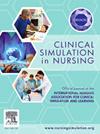Communication of bad news related to suicide attempt: High-fidelity simulation for clinical teaching
IF 2.5
3区 医学
Q1 NURSING
引用次数: 0
Abstract
Background
The communication of bad news related to suicide attempts is challenging for health professionals, since suicide is a complex phenomenon. Training in this area is highlighted, and clinical simulation becomes a promising strategy, providing tools for understanding mental suffering and promoting skill development in the real learning environment.
Methods
It is a methodological study for constructing and validating a high-fidelity simulation scenario on the communication of bad news related to a suicide attempt, based on the SPIKES protocol on the communication of bad news. Eleven experts validated the constructed scenario. Simple descriptive analyses, the content validity index, and Gwet's AC1 test for agreement reliability were performed.
Results
Most of the items obtained agreement greater than 70%. The overall reliability (AC1 = 0.80321) of the scenario was considered excellent. In high-fidelity simulation (AC1 = 0.71749), it was satisfactory and in communicating bad news (AC1 = 0.86164) excellent.
Conclusions
A high-fidelity simulation scenario related to communication of bad news about a suicide attempt was constructed and validated and obtained a satisfactory evaluation for simulation and is excellent for communicating bad news; that is, it can be used in teaching students and healthcare professionals and can be replicated countless times.
与自杀企图有关的坏消息的传达:临床教学的高保真模拟
由于自杀是一种复杂的现象,因此对卫生专业人员来说,传达与自杀企图有关的坏消息是一项挑战。这一领域的培训受到重视,临床模拟成为一种有前途的策略,为理解精神痛苦和促进真实学习环境中的技能发展提供了工具。方法基于spike协议,构建并验证与自杀未遂相关的坏消息传播的高保真仿真场景。11位专家验证了构建的场景。进行简单的描述性分析、内容效度指标和Gwet协议信度的AC1检验。结果大多数项目的一致性大于70%。该方案的总体可靠性(AC1 = 0.80321)被认为是优秀的。在高保真仿真(AC1 = 0.71749)中,它是令人满意的,在传递坏消息(AC1 = 0.86164)中,它是优秀的。结论构建并验证了自杀未遂坏消息传播的高保真仿真场景,仿真效果满意,具有良好的坏消息传播效果;也就是说,它可以用于教学学生和医疗保健专业人员,并且可以无数次复制。
本文章由计算机程序翻译,如有差异,请以英文原文为准。
求助全文
约1分钟内获得全文
求助全文
来源期刊

Clinical Simulation in Nursing
NURSING-
CiteScore
5.50
自引率
15.40%
发文量
107
期刊介绍:
Clinical Simulation in Nursing is an international, peer reviewed journal published online monthly. Clinical Simulation in Nursing is the official journal of the International Nursing Association for Clinical Simulation & Learning (INACSL) and reflects its mission to advance the science of healthcare simulation.
We will review and accept articles from other health provider disciplines, if they are determined to be of interest to our readership. The journal accepts manuscripts meeting one or more of the following criteria:
Research articles and literature reviews (e.g. systematic, scoping, umbrella, integrative, etc.) about simulation
Innovative teaching/learning strategies using simulation
Articles updating guidelines, regulations, and legislative policies that impact simulation
Leadership for simulation
Simulation operations
Clinical and academic uses of simulation.
 求助内容:
求助内容: 应助结果提醒方式:
应助结果提醒方式:


